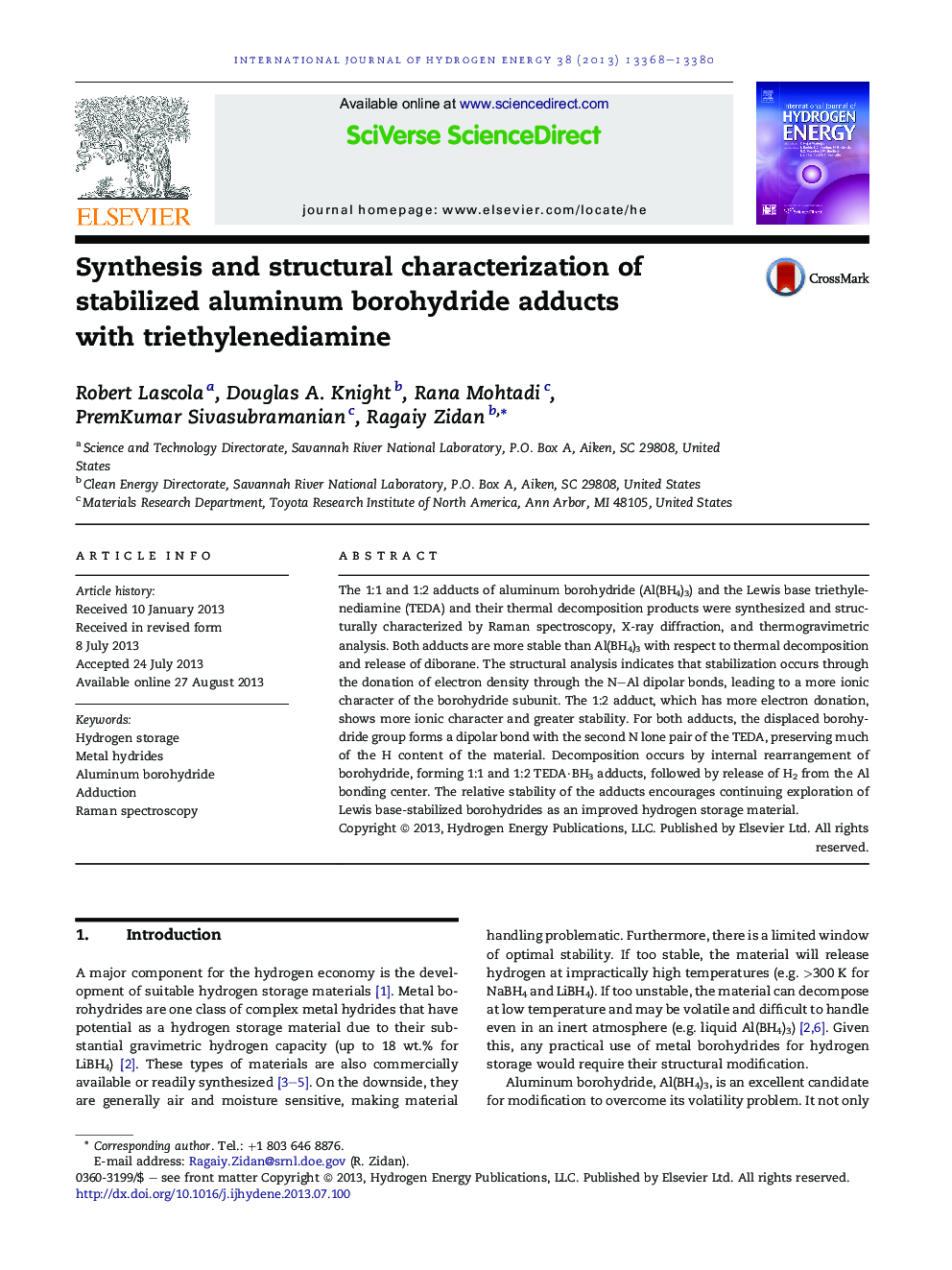| Article ID | Journal | Published Year | Pages | File Type |
|---|---|---|---|---|
| 1273343 | International Journal of Hydrogen Energy | 2013 | 13 Pages |
•Al(BH4)3 is stabilized by 1:1 and 1:2 adducts with Lewis base triethylaminediamine.•Novel insertion adduct structures confirmed by Raman, X-ray, TGA analyses.•Stability associated with increased anionic character of BH4 subunit.•Thermal decomposition mechanism involves 1:1 and 1:2 BH3·TEDA adducts.•Adduction is a possible pathway for improved hydrogen storage materials.
The 1:1 and 1:2 adducts of aluminum borohydride (Al(BH4)3) and the Lewis base triethylenediamine (TEDA) and their thermal decomposition products were synthesized and structurally characterized by Raman spectroscopy, X-ray diffraction, and thermogravimetric analysis. Both adducts are more stable than Al(BH4)3 with respect to thermal decomposition and release of diborane. The structural analysis indicates that stabilization occurs through the donation of electron density through the N–Al dipolar bonds, leading to a more ionic character of the borohydride subunit. The 1:2 adduct, which has more electron donation, shows more ionic character and greater stability. For both adducts, the displaced borohydride group forms a dipolar bond with the second N lone pair of the TEDA, preserving much of the H content of the material. Decomposition occurs by internal rearrangement of borohydride, forming 1:1 and 1:2 TEDA·BH3 adducts, followed by release of H2 from the Al bonding center. The relative stability of the adducts encourages continuing exploration of Lewis base-stabilized borohydrides as an improved hydrogen storage material.
Graphical abstractFigure optionsDownload full-size imageDownload as PowerPoint slide
